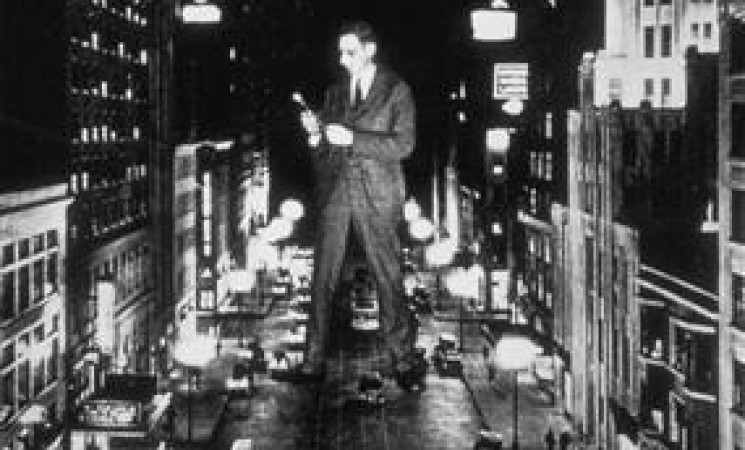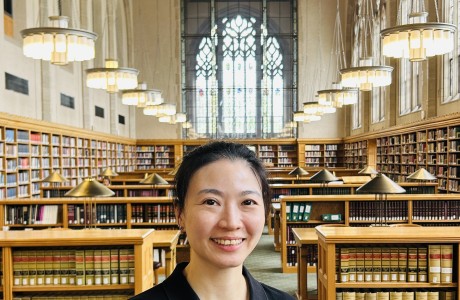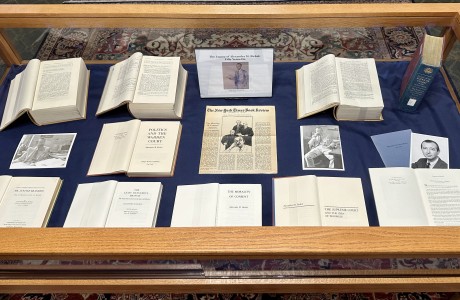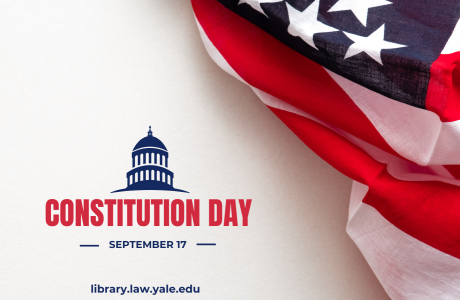Crash Course in Experimental Economic Legal Research: Notes from the Workshop at UPenn Law

Two parties enter into mediation over jointly held assets. What will be the likely outcome of their negotiations? Let’s assume they both have perfect and complete information, that they are rationally motivated by economic self-interest, and that the cost of the negotiation is already covered. What if a third party enters the negotiations with a legitimate claim to the assets? And a fourth party…? Further, what if some parties have better information than others? What if some feel more morally entitled to the assets than others? What would happen then? And how might we devise a mediation mechanism that justly compensates for such possibilities? For an early analysis of this scenario, see Hoffman & Spitzer, Coase Theorem: Some Experimental Tests, 25 J.L. & Econ. 73 (1982. see also endnote 1). For a broader discussion of these issues, explore the burgeoning field of Experimental Economic Legal Research.
On October 24, 2013, Claudia M. Landeo and Kathryn Zeiler delivered a crash course on the field of Experimental Economic Legal Research (EELR) at UPenn Law School. EELR studies predict, test, and help explain economic-legal outcomes; they aim to enhance the effectiveness of legal institutions by marrying discoveries from economic and legal research. EELR differs from theoretical law and economics scholarship in its use of laboratory and field experiments. The legal focus of EELR attunes experimental economics to individuals’ desire for justice and fair outcomes.
To jump into the field quickly, Landeo and Zeiler suggest consulting these two sources: 1. Rachel Croson, Why and How to Experiment: Methodologies from Experimental Economics Symposium: Empirical and Experimental Methods in Law, 2002 U. Ill. L. Rev. 921 (2002); and 2. Douglas D. Davis & Charles A. Holt, Experimental Economics (1993). Together, these readings explain the rationale for employing experimental methods in law and economics research, and the key methods employed by EELR scholars. The methods rest on an assumption of many experimental economics studies: a theory should be given the best chance of succeeding in the laboratory.
Experimental economics studies typically assume that a theory is an abstract representation of a phenomenon that should be applicable across a wide range of situations and individuals. For this reason, laboratory settings involve minimal context. Players should understand the tasks, decisions, and consequences involved in the experimental game, but they need not explicitly consider social factors. Concomitantly, few to no specific requirements are imposed on subject pools. It is acceptable in many EELR laboratories to recruit undergraduates and graduates, and to use their behaviors to predict decision-making in the wider society (see endnote 2). Random assignment attempts to control for individual (social) differences and perspectives. The rational choice of players is supported, in part, by a lack of deception in EELR studies, and also by the use of real rewards (e.g., money) for “wins” (see endnote 3). All experimental specifications aim to bolster internal validity, or the match of the experiment to every assumption of the theory being tested.
Like all scholarship, EELR studies should be read critically (see endnote 4). Less useful critiques of EELR scholarship, according to Zeiler, include: “it’s just too simple…,” “you used students…,” and “the stakes are too low” (e.g., you only awarded $15). While these considerations matter, she feels that better critiques (i.e., more engaged and productive) include: “you missed an assumption of the theory” (i.e., lack of internal validity), “your assignment of subjects was not random,” “the design was too complicated” (e.g., participants likely didn’t understand the instructions), “deception was used,” and “you jumped to normative conclusions too quickly” (e.g., from one unverified finding). Further, she cautions readers of EELR studies to be wary of journal articles that do not include or link to the instructions used during the experiment. Both she and Landeo urge scholars to report on their formative piloting and subject debriefings.
In addition to the studies cited above and in the endnotes, Landeo and Zeiler suggest that those serious about EELR immerse themselves in early literature on game theory, market operations, public goods and the commons, and more. The following links to works by Nobel prize-winners in Economics represent a good starting point for background reading:
Vernon Smith, bargaining and experimental economic methods. (See also Plott & Smith, Handbook of Experimental Economics Results).
Alvin Roth, game theory
Elinor Ostrom, public goods/the problem of the commons
John Nash, cooperative game theory (see also Osborne’s introductory text on game theory)
Reinhard Selten & John Harsanyi, advanced game theory
All of these texts address a core concern: What compels people to behave in the ways that they do? EELR explores this question in laboratories and in the field, in the hope of informing our understanding of why actors make the choices they do in legal settings.
ENDNOTES:
1. Elizabeth Hoffman & Matthew L. Spitzer, Entitlements, Rights, and Fairness: An Experimental Examination of Subjects’ Concepts of Distributive Justice, 14 J. Legal Stud. 259 (1985). This study has been cited more than 500 times. Important replications and expansions of this early work include: Rachel Croson & Robert H. Mnookin, Does Disputing through Agents Enhance Cooperation? Experimental Evidence, 26 J. Legal Stud. 331 (1997); Rachel Croson & Jason Scott Johnston, Experimental Results on Bargaining under Alternative Property Rights Regimes, 16 J.L. Econ. & Org. 50 (2000).
2. Experimental behavioral economics studies deviate from this norm by introducing demographic and other controls.
3. “Wins” are defined within the context of a given study. Often, what constitutes a “win” to a participant is the focus of the study.
4. See Kathryn Zeiler, Cautions on the Use of Economics Experiments in Law, 166 J. Institutional & Theor. Econ. 178 (2010). Thanks to Dane Thorley of Columbia Law School, fellow workshop participant, for suggesting this resource.
IMAGE: The World’s Most Miniature White Way, by General Electric (1927). Courtesy of Yale Digital Image Collection.


